QuestionQUESTION: I have begun trying to break a 20 month old colt. I have used the Lyons on horses as a guide. Two weeks ago another man started trying to break this colt and used rough handling on him. He is frightened by the sight of the saddle. I can rub him all over with the saddle blanket but as soon as he sees the saddle he can't stand for it to touch him.Do you think over a given period of time, if I just continue to work with him, he will settle down? I have been working him with a halter on but not holding it or tying him. Will look forward to your response.
ANSWER: Arvis -
If you go slow with him you should get past it. I would do a couple things:
1. If you are working him in a round pen, you can put the saddle on the rails and work with him as usual. That may help him get used to the saddle being around.
2. If you have a surcingle, you can put the saddle pad on with the surcingle and work him with that. Putting stirrups on the surcingle can help him get used to the stirrups moving around.
3. Don't push to get the saddle on him right away. Let him smell it, and then touch him at the shoulder first. Once you can get to putting the saddle on - just put it on without the pad. I wouldn't strap it to him the first few times either. That way if he doesn't agree with it, it falls right off and doesn't cause any long term trauma.
It is very unfortunate that someone came along and wrecked your progress. However, if you are patient and persitent you will get the saddle on.
Good Luck!
Michael Hockemeyer
Kicking Bear Mustangs
---------- FOLLOW-UP ----------
QUESTION: If I may, I would like to be more specific about the training methods used on this colt. This person had the first opportunity to work with this colt. He tied him to a tree and started trying to saddle him. Naturaly the colt fought and would rear up and fall backwards. After ten days of this he took him to an arena used for rodeos and put him in a bull chute and the colt came over the top of it, scraping and skinning himself on the legs. He finally called and said he wasn't going to be able to break him explaining he had never worked with a Tenn Walking horse before. Like that would make a difference. I started working with him Monday the 17th and have been able to get the saddle blanket on him without too much effort. I have been working with him with no restraints. He worked good this morning and I was able to get the blanket on him and hope to build on this. I have been using my english saddle as it is smaller and has less squeeks. He shys away from it when you start moving the hand on the leather. That little sound seems to terrify him. I really appreciate your quick response to my question.
AnswerWhen you run into a situation like this you usually have to go back a few steps in training. You almost need to start over from scratch. This is what I would do, some of it may be stuff the horse knows, but I would do it anyway.
1. Take an old lunge whip, and cut off the "whip" part. Then tie a red bandanna on the end. This will give you a long stick with a flag on the end. With this you can safely work on rubbing the horse all over his body, and in his touchy areas. It also is nice because the flag is always moving, and the horse will get used to things moving in and touching him then moving away. Just go slowly with it, and work in segments. Make sure he tolerates it on his front end first, then his front end and chest, etc....
2. Then I would bring out a saddle rope. With the saddle rope loosely coiled, rub him down. The saddle rope is nice because you still have some distance between the two of you, plus it is more rigid so it contacts the horse differently. You can stand at the shoulder and cautiously lift the rope up and bring it down gently on to the horses back. That is to help get the horse used to you lifting the saddle up, and putting it on to the horse's back.
3. Then I would bring out the blanket and rub him all over with it. Drape it over his neck and lead him for a few steps with it on, and then remove it. Do that a few times and then shift it down to his back. If it falls off it falls off. The idea is to get the horse to understand it can sit on his back, and he can still move at the same time.
4. I would put a blanket over his back and use either a surcingle, or an extra lead rope around the horses girth area to simulate a saddle being secured around him. I would reccommend using another lead rope or string as a chest strap to keep the surcingle from moving back. Once that is on, walk and work him in that. Get him used to that being on him. If you have extra stirrups from your English saddle, or if you can take them off your saddle, tie them to the surcingle so he can feel stirrups moving around and hitting him as he moves.
5. Now I would bring out the saddle. Let him smell it, and touch it to his nose. Then touch it to his shoulder, and immediately take it away. Gradually get to where you can put the saddle over his neck and withers. Don't worry about putting it in the right place at first. It is safer for you to stand in front of the shoulder and put it directly over his shoulders where the neck meets the withers. Take it off immediately and repeat that a few times. Each time you put it on, slide it back a little bit. Eventually you should be able to put the saddle over his shoulders and slide it back into position. Then walk him around to let him get the feel of it.
6. Once he does that okay, put the saddle on with the blanket. Do it the same way, put both things on at the shoulder, and then slide tham back into position together. Then put the girth on. I would definately attach a chest strap to keep the saddle from moving back. If the horse starts to buck, you don't want the saddle to move back into the horses flanks. Then he will really buck.
I understand what you are saying that the horse doesn't even like the sight or sound of the saddle, but it is a progression. You have to follow the steps and as you do the horse gets over the sights and sounds of having different equipment around and put on him. Everything I have told you can be done without tieing him up, and I think it is good that you are trying to not do that.
If the horse continues to give you a lot of trouble, and he just can't seem to get past what the other trainer did, then you will want to get a trainer out to help you.
Best of Luck!
Michael Hockemeyer
Kicking Bear Mustangs

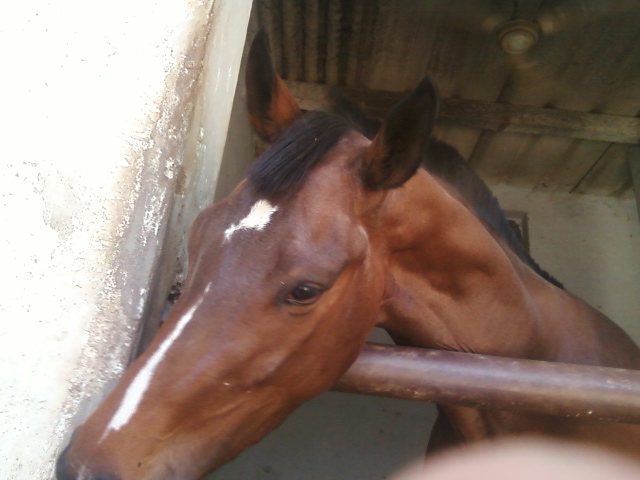 filly with red eyes
Question
red eyes
hello maam, this is the photo
filly with red eyes
Question
red eyes
hello maam, this is the photo
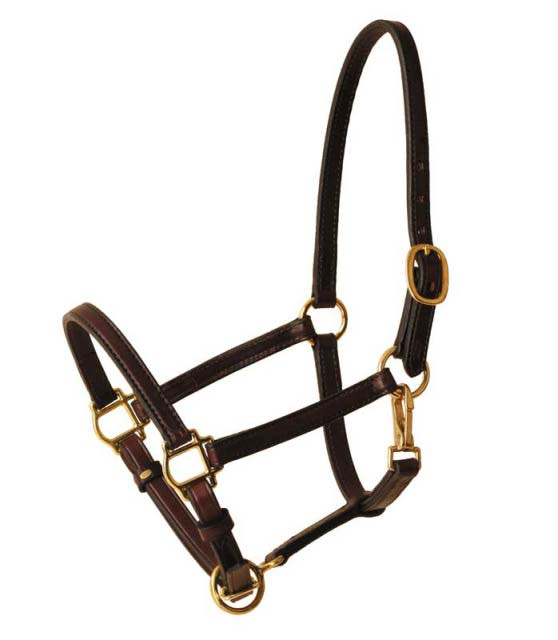 halter
Questionhalter
QUESTION: hello sir, may i know w
halter
Questionhalter
QUESTION: hello sir, may i know w
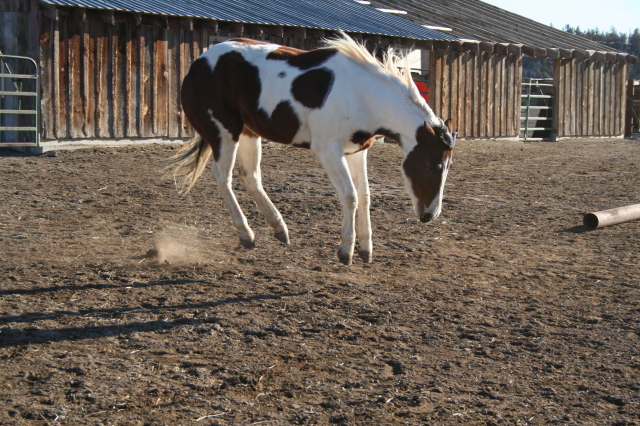 Staying at a gait
QuestionMisty
QUESTION: Hi,
My horse is a 4 yr o
Staying at a gait
QuestionMisty
QUESTION: Hi,
My horse is a 4 yr o
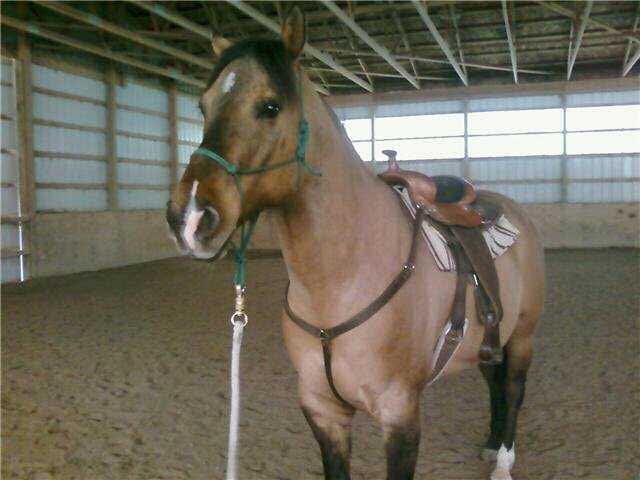 Scared Horse
Question
My horse
I have been working consistent
Scared Horse
Question
My horse
I have been working consistent
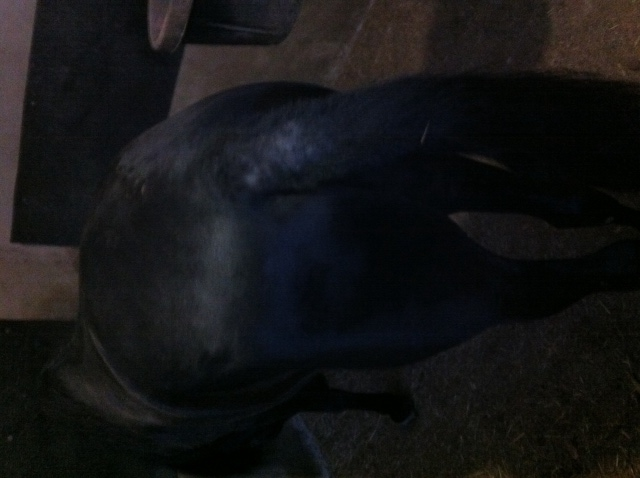 Hair loss
Question
Tail Tail close up
Rick: i have r
Hair loss
Question
Tail Tail close up
Rick: i have r